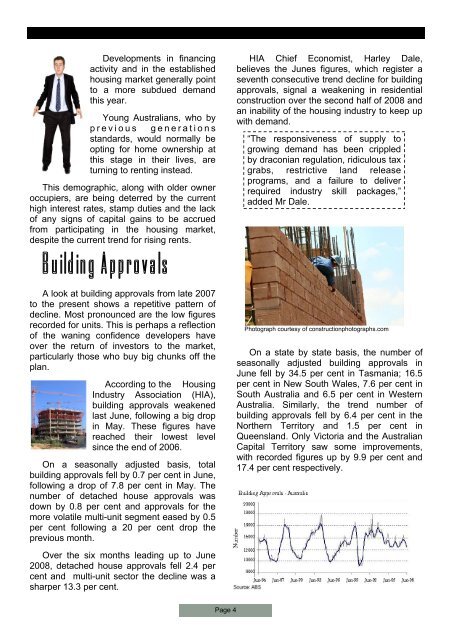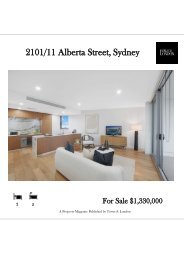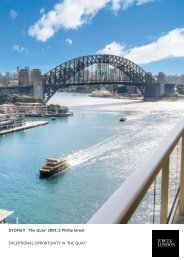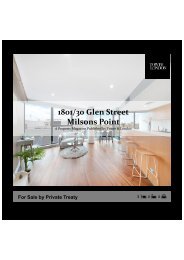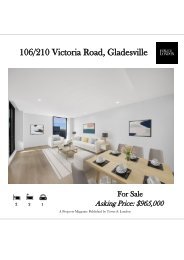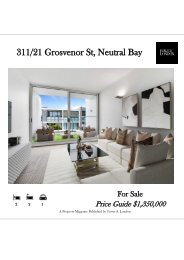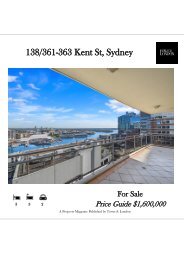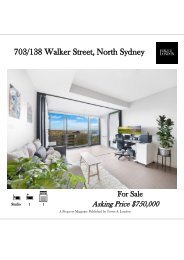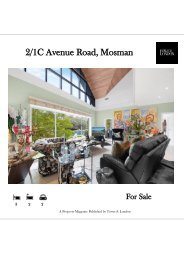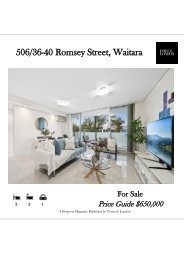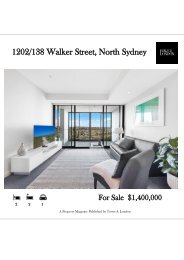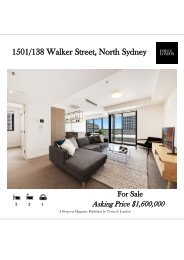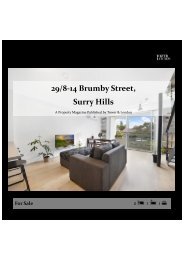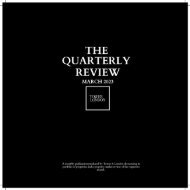2008 Spring
You also want an ePaper? Increase the reach of your titles
YUMPU automatically turns print PDFs into web optimized ePapers that Google loves.
Developments in financing<br />
activity and in the established<br />
housing market generally point<br />
to a more subdued demand<br />
this year.<br />
Young Australians, who by<br />
previous generations<br />
standards, would normally be<br />
opting for home ownership at<br />
this stage in their lives, are<br />
turning to renting instead.<br />
This demographic, along with older owner<br />
occupiers, are being deterred by the current<br />
high interest rates, stamp duties and the lack<br />
of any signs of capital gains to be accrued<br />
from participating in the housing market,<br />
despite the current trend for rising rents.<br />
HIA Chief Economist, Harley Dale,<br />
believes the Junes figures, which register a<br />
seventh consecutive trend decline for building<br />
approvals, signal a weakening in residential<br />
construction over the second half of <strong>2008</strong> and<br />
an inability of the housing industry to keep up<br />
with demand.<br />
“The responsiveness of supply to<br />
growing demand has been crippled<br />
by draconian regulation, ridiculous tax<br />
grabs, restrictive land release<br />
programs, and a failure to deliver<br />
required industry skill packages,”<br />
added Mr Dale.<br />
A look at building approvals from late 2007<br />
to the present shows a repetitive pattern of<br />
decline. Most pronounced are the low figures<br />
recorded for units. This is perhaps a reflection<br />
of the waning confidence developers have<br />
over the return of investors to the market,<br />
particularly those who buy big chunks off the<br />
plan.<br />
According to the Housing<br />
Industry Association (HIA),<br />
building approvals weakened<br />
last June, following a big drop<br />
in May. These figures have<br />
reached their lowest level<br />
since the end of 2006.<br />
On a seasonally adjusted basis, total<br />
building approvals fell by 0.7 per cent in June,<br />
following a drop of 7.8 per cent in May. The<br />
number of detached house approvals was<br />
down by 0.8 per cent and approvals for the<br />
more volatile multi-unit segment eased by 0.5<br />
per cent following a 20 per cent drop the<br />
previous month.<br />
Over the six months leading up to June<br />
<strong>2008</strong>, detached house approvals fell 2.4 per<br />
cent and multi-unit sector the decline was a<br />
sharper 13.3 per cent.<br />
Photograph courtesy of constructionphotographs.com<br />
On a state by state basis, the number of<br />
seasonally adjusted building approvals in<br />
June fell by 34.5 per cent in Tasmania; 16.5<br />
per cent in New South Wales, 7.6 per cent in<br />
South Australia and 6.5 per cent in Western<br />
Australia. Similarly, the trend number of<br />
building approvals fell by 6.4 per cent in the<br />
Northern Territory and 1.5 per cent in<br />
Queensland. Only Victoria and the Australian<br />
Capital Territory saw some improvements,<br />
with recorded figures up by 9.9 per cent and<br />
17.4 per cent respectively.<br />
Page 4


